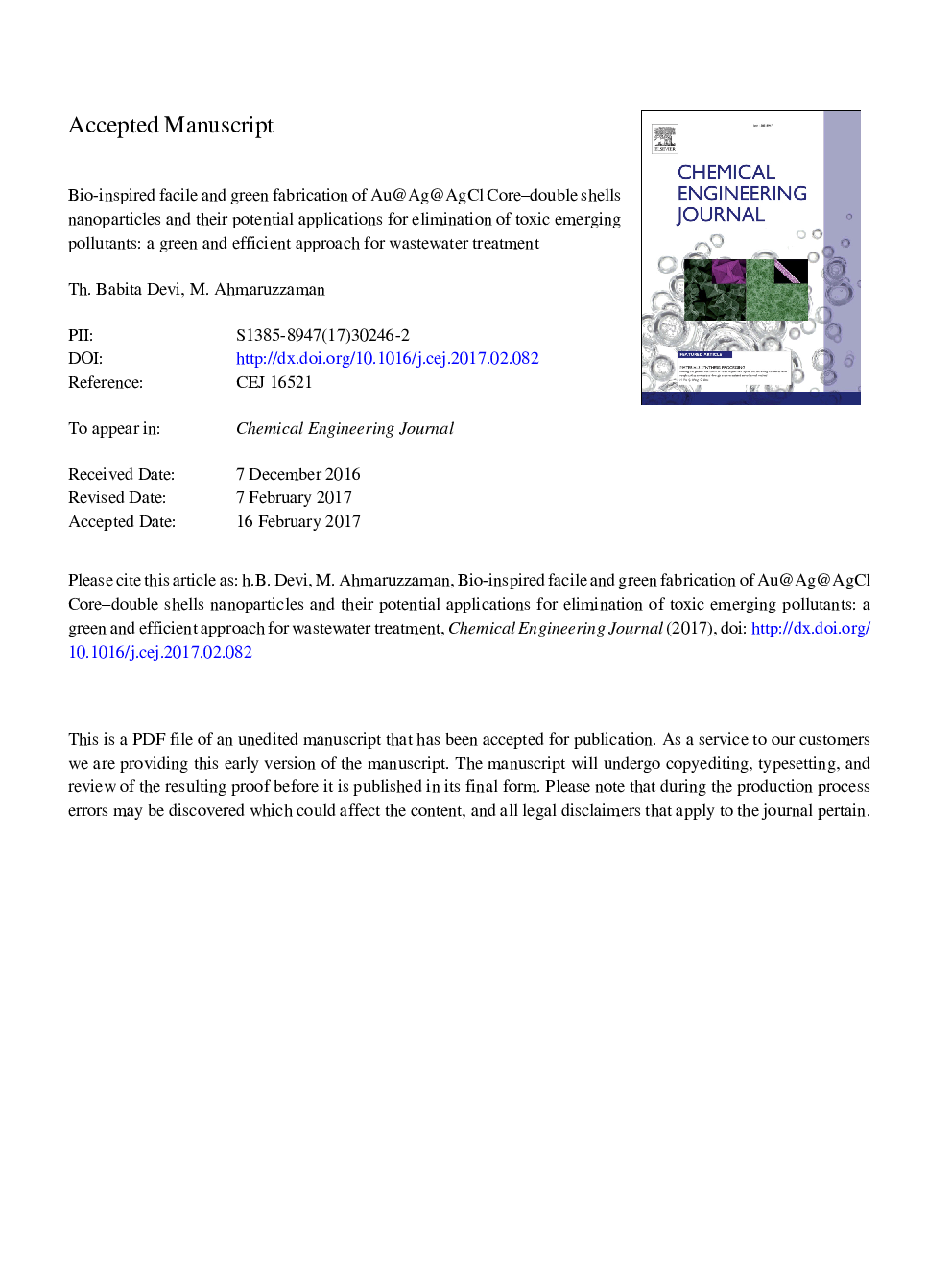| کد مقاله | کد نشریه | سال انتشار | مقاله انگلیسی | نسخه تمام متن |
|---|---|---|---|---|
| 4763242 | 1422961 | 2017 | 39 صفحه PDF | دانلود رایگان |
عنوان انگلیسی مقاله ISI
Bio-inspired facile and green fabrication of Au@Ag@AgCl core-double shells nanoparticles and their potential applications for elimination of toxic emerging pollutants: A green and efficient approach for wastewater treatment
دانلود مقاله + سفارش ترجمه
دانلود مقاله ISI انگلیسی
رایگان برای ایرانیان
کلمات کلیدی
موضوعات مرتبط
مهندسی و علوم پایه
مهندسی شیمی
مهندسی شیمی (عمومی)
پیش نمایش صفحه اول مقاله

چکیده انگلیسی
This study reports a green method for the synthesis of Gold@Silver@Silver chloride (Au@Ag@AgCl) core-double shells nanoparticles (NPs) using Momordica charantia leaves extract. The formation of core-double shells structure was confirmed by TEM image and further it was supported by elemental mapping and EDX line profile analysis. In this method, the NPs were synthesized without using any toxic reagents and external halide. The phytochemicals present in the leaves extract were responsible for the formation of the NPs. The photodegradation of pharmaceutical active compounds, such as clofibric acid (CA) and ibuprofen (IBP) in aqueous solution was also investigated by Au@Ag@AgCl nanoparticles as a photocatalyst under solar irradiation. The catalyst dose was varied from 0.01 to 0.1Â g/L and 0.07Â g was found as an optimum amount of catalyst. The plausible degradation mechanisms, reaction kinetics and photolysis products of IBP and CA under solar irradiation were also reported in this study. To the best knowledge of the authors, it was for the first time, we report the synthesis of Au@Ag@AgCl (core-double shells) using Momordica charantia leaves extract. The reduction of 2,4,6-trinitro phenol (2,4,6-TNP) was also investigated using Au@Ag@AgCl as a catalyst. The study indicated that a total of 97.5% of 2,4,6-TNP was reduced. It was observed that 97% of IBP and 98% of CA were degraded using Au@Ag@AgCl nanoparticles as a catalyst. The reactive species, such as O2â and Cl0 were mainly responsible for the photodegradation of IBP and CA under solar irradiation.
ناشر
Database: Elsevier - ScienceDirect (ساینس دایرکت)
Journal: Chemical Engineering Journal - Volume 317, 1 June 2017, Pages 726-741
Journal: Chemical Engineering Journal - Volume 317, 1 June 2017, Pages 726-741
نویسندگان
Th. Babita Devi, M. Ahmaruzzaman,